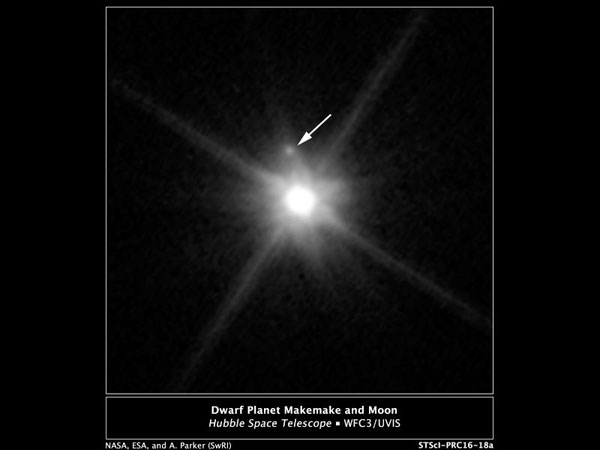Nasa’s Hubble Space Telescope has spotted a small, dark moon orbiting the second brightest icy dwarf planet after Pluto in the Kuiper Belt.
Nicknamed “MK 2”, the 100-mile wide moon was seen approximately 13,000 miles from the dwarf planet called “Makemake” which is 870-mile wide.
The dwarf planet, discovered in 2005, is named for a creation deity of the Rapa Nui people of Easter Island.
The Kuiper Belt is a vast reservoir of leftover frozen material from the construction of our solar system 4.5 billion years ago and home to several dwarf planets.
Some of these worlds have known satellites but this is the first discovery of a companion object to Makemake – one of five dwarf planets recognised by the International Astronomical Union.
The team used the same Hubble technique to observe the moon as they did for finding the small satellites of Pluto in 2005, 2011 and 2012.
“The moon’s orbit seems to be edge-on, meaning that when you look at the system, you are going to miss the moon because it gets lost in the bright glare of Makemake,” said Alex Parker from Southwest Research Institute, Boulder, Colorado.
A moon’s discovery can provide valuable information on the dwarf-planet system. By measuring the moon’s orbit, astronomers can calculate a mass for the system and gain insight into its evolution.
Uncovering the moon also reinforces the idea that most dwarf planets have satellites.
The discovery was announced in the journal Minor Planet Electronic Circular.
Download the Gadgets 360 app for Android and iOS to stay up to date with the latest tech news, product reviews, and exclusive deals on the popular mobiles.



